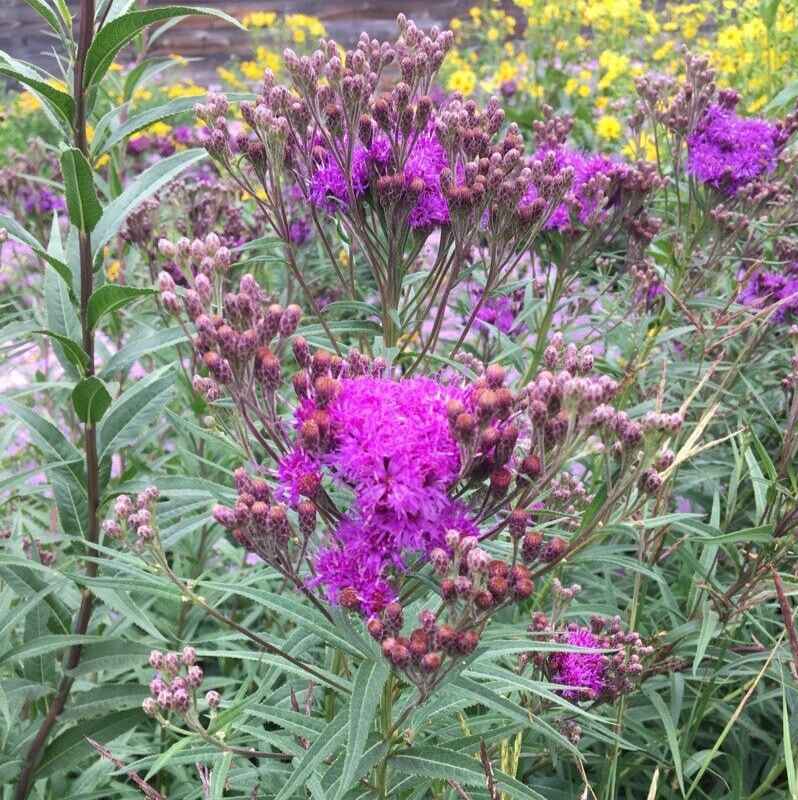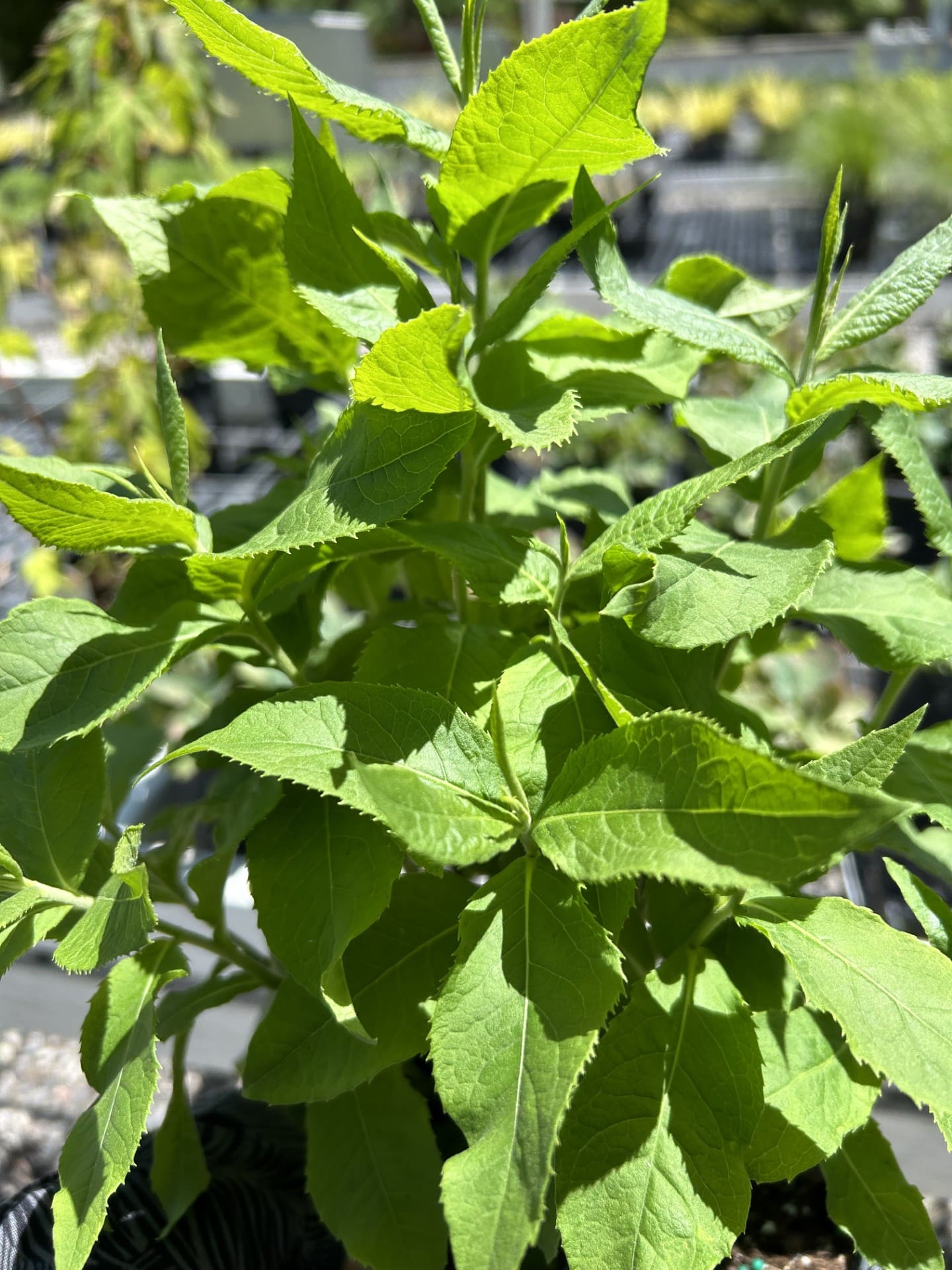Common Ironweed – Vernonia fasciculata
Overview: Common Ironweed, scientifically known as Vernonia fasciculata, is a robust perennial native to North America. It is recognized for its tall stature and clusters of vibrant purple flowers that bloom in late summer to early fall. This striking plant adds height and a splash of color to naturalistic landscapes and is a favorite among pollinators.
Typical Uses:
Common Ironweed serves various purposes in garden and landscape design:
- As a background plant in perennial borders, providing height and structure
- In wildflower meadows and naturalized areas, attracting pollinators and beneficial insects
- In rain gardens and along pond edges, where it can tolerate moist soils
- As a cut flower in floral arrangements, adding bold color and texture
Establishment and Care Instructions:
Planting: Select a site with moist, well-drained soil and full to partial sunlight. Dig a hole twice as wide and slightly deeper than the root ball. Place the plant in the hole, ensuring the top of the root ball is level with the soil surface. Backfill with soil and water thoroughly.
Watering: Keep the soil consistently moist, especially during the first growing season. Once established, Common Ironweed can tolerate occasional dry periods but thrives best with regular watering.
Pruning: Deadhead spent flowers to encourage continuous blooming and prevent self-seeding if desired. Cut back the stems to the ground in late fall or early spring to promote healthy new growth.
Fertilizing: Apply a balanced fertilizer in spring to support vigorous growth and abundant flowering. In rich soils, fertilization may not be necessary.
Special Features and Usage:
Common Ironweed offers several distinctive features:
- Flowers: Clusters of bright purple flowers bloom from late summer to early fall, attracting bees, butterflies, and other pollinators.
- Foliage: Lance-shaped, dark green leaves provide a lush backdrop for the vibrant flowers and add textural interest to the garden.
- Pollinator Friendly: An excellent nectar source for a variety of pollinators, supporting garden biodiversity and ecosystem health.
- Height: Reaches heights of 3 to 6 feet, making it ideal for adding vertical interest to garden compositions.
- Low Maintenance: Requires minimal care once established, making it a suitable choice for low-maintenance and sustainable landscapes.
- Adaptability: Thrives in a variety of soil types, including clay and loam, and can tolerate both wet and dry conditions, making it a versatile addition to many garden settings.


Reviews
There are no reviews yet.